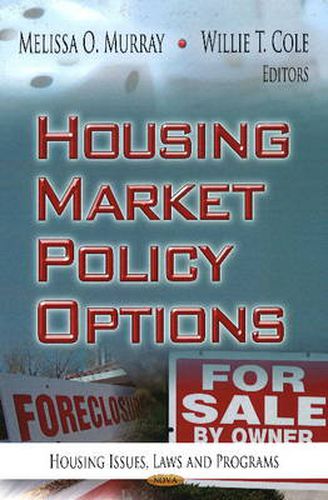Readings Newsletter
Become a Readings Member to make your shopping experience even easier.
Sign in or sign up for free!
You’re not far away from qualifying for FREE standard shipping within Australia
You’ve qualified for FREE standard shipping within Australia
The cart is loading…






The ongoing problems in the U.S. housing market continue to impede the economic recovery. House prices have fallen an average of about 33 percent from their 2006 peak, resulting in about $7 trillion in household wealth losses and an associated ratcheting down of aggregate consumption. At the same time, an unprecedented number of households have lost, or are on the verge of losing, their homes. The extraordinary problems plaguing the housing market reflect in part the effect of weak demand due to high unemployment and heightened uncertainty. But the problems also reflect three key forces originating from within the housing market itself: a persistent excess supply of vacant homes on the market, many of which stem from foreclosures; a marked and potentially long-term downshift in the supply of mortgage credit; and the costs that an often unwieldy an inefficient foreclosure process imposes on home-owners, lenders, and communities. This book provides a framework for thinking about directions policy-makers might take to help the housing market.
$9.00 standard shipping within Australia
FREE standard shipping within Australia for orders over $100.00
Express & International shipping calculated at checkout
The ongoing problems in the U.S. housing market continue to impede the economic recovery. House prices have fallen an average of about 33 percent from their 2006 peak, resulting in about $7 trillion in household wealth losses and an associated ratcheting down of aggregate consumption. At the same time, an unprecedented number of households have lost, or are on the verge of losing, their homes. The extraordinary problems plaguing the housing market reflect in part the effect of weak demand due to high unemployment and heightened uncertainty. But the problems also reflect three key forces originating from within the housing market itself: a persistent excess supply of vacant homes on the market, many of which stem from foreclosures; a marked and potentially long-term downshift in the supply of mortgage credit; and the costs that an often unwieldy an inefficient foreclosure process imposes on home-owners, lenders, and communities. This book provides a framework for thinking about directions policy-makers might take to help the housing market.